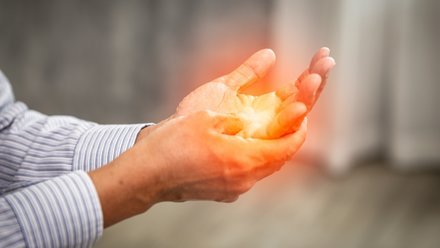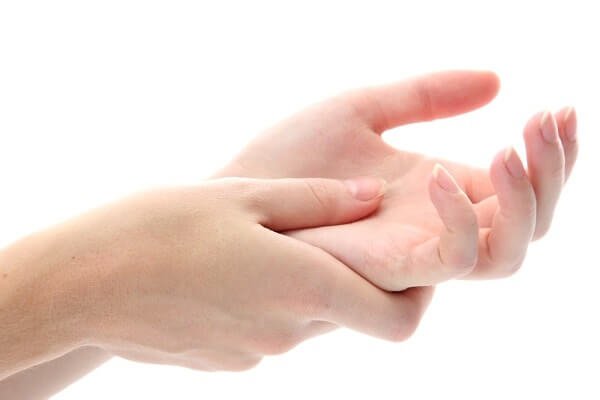
Dupuytren’s contracture is a benign nodular fibromatosis of palmar and digital fascia, described in 1831 by the French surgeon Guillaume Dupuytren (1777-1835).
With an unknown origin, Dupuytren’s disease is a progressive fibroproliferative disorder which primarly affects the hands, but also can be associated with other types of fibromatoses such as plantar fibromatosis (Ledderhose disease), penile fibromatosis (Peyronie disease), and fibromatosis of the dorsum of the proximal interphalangel (PIP) joints (Garrod’s nodules or knuckle pads).
Dupuytren’s disease, also known as palmar fibromatosis, leads to shortening of the skin anchoring ligaments of the palm (palmar fascia), which may lead to permanent flexion contracture of the digits and thumb. The condition affects 1 to 2 % of the population and is the most common form of fibromatosis.
Unfortunately, there are no proven ways to prevent Dupuytren’s disease or limit its progress.

Although the main origin of Dupuytren’s contracture is unknown, research of geographical distribution has suggested that Norsemen in the Viking age were responsible for spreading the disease.
The Nordic theory of origin is supported by the high incidence of Dupuytren’s cases in Denmark and those parts of the UK, namely north of England and the north and west of Scotland, both of which were invaded and subsequently colonized by Norsemen.
Dupuytren’s contracture is more common and severe in males, increasing with age and peaking around the 5th decade of life. Females, on the other hand, are more prone in the 6th decade of their life.
It rarely affects those in their teens and twenties, but the incidence rises in each decade thereafter. Also, Dupuytren’s contracture has a hereditary component which includes white caucasians of North European descent.
Finally, Dupuytren’s disease has been, according to several studies, reported to be associated with possible causative factors and diseases such as:


Additionally, patients usually complains about difficulty with tasks such as:
Although there is no cure, patients suffering from Dupuytren’s disease may obtain a significant functional benefit, in most cases, after surgical correction of the deformity.
Postoperative attention such as occupational therapy and physiotherapy support is crucial, in order to achieve a prompt recovery.
As with any type of surgery, postoperative complications may occur, which can include:

Aromatherapy can help in both, early and post-operative treatment. The most efficient way to apply aromatherapy to support the treatment of Dupuytren’s contracture is by massaging the hand and fingers to relax the fascia.
Massage can be performed applying creams, lotions or salves prepared with a blend of essential oils containing properties to relieve stiffness and aid mobility, decreasing tendon fibrosis.
Essential oils that may be useful for these purposes include:
Our Shaman Botica has created Tenderoni Caress Salve, which contains a special essential oil synergy to relieve tight tendons. It includes wintergreen, yarrow, sage, geranium, black spruce, cypress, thyme, lavender and vetiver essential oils.
You can find it in our shop or by clicking on the image below.